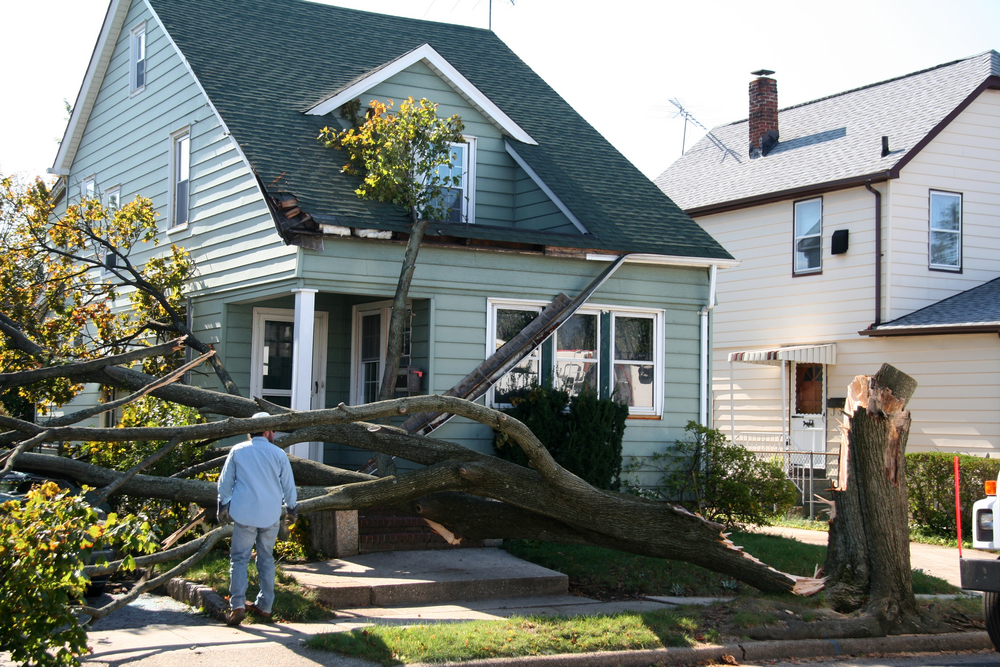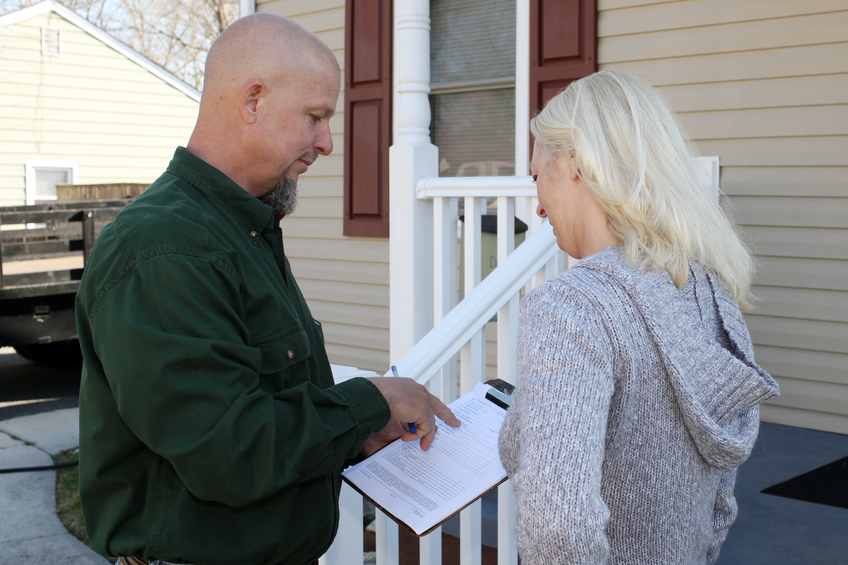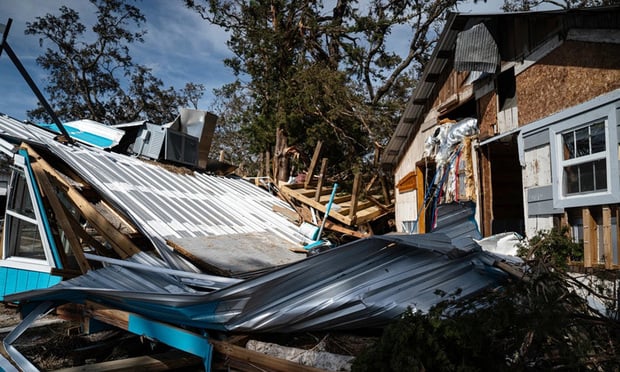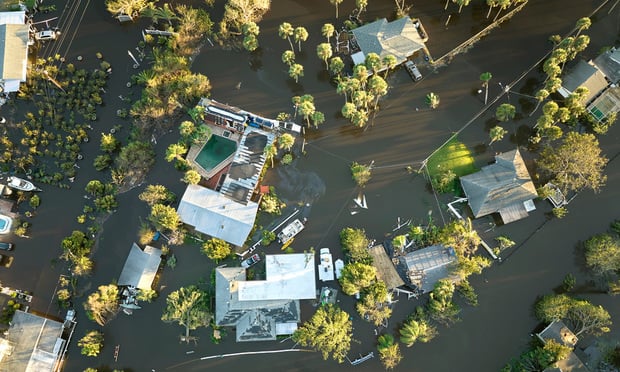A tornado cuts a path across a small rural town leaving broken businesses and homes in its wake. An unexpected hurricane devastates a coastal region and impacts thousands. And an out-of-control wildfire rapidly spreads across state borders. These natural disasters are unpredictable and unforeseen, and leave a path of devastation and destruction in their wake.
For insurance organizations, natural disasters can bring added pressure. Timing is everything in these critical situations and today's organizations must be ready to respond immediately, efficiently and effectively. From claims adjusters to customer service representatives, catastrophes represent an “all-hands-on-deck” situation for insurers.
Fortunately, new technologies are changing the way insurers prepare for and respond to catastrophes. Disruptive technologies are evolving at a rapid pace and quickly transforming the industry's ability to prepare for and respond to natural disasters.
From cell phones and mobile technology to the rise of drones, how is disruption impacting the way insurance organizations react to catastrophes?
|Technology provides early warnings
During the past 35 years, disasters have resulted in an estimated 2.5 million deaths and cost more than $1.5 billion, says SciDevNet. In fact, according to AccuWeather, natural disasters now affect 217 million people every single year. With the number of natural and geophysical disasters on the rise — and climate-related catastrophes increasing by 80 percent since 1980 — early detection is becoming far more critical to protecting lives and property. It is clear that early warning is a basic and necessary component of any disaster risk reduction strategy.
Within the insurance industry, technology has introduced a number of systems that enable individuals to prepare for and even prevent catastrophes. Thanks to the evolution of technology, weather forecasting apps have become increasingly accurate in providing early warning of pending disasters. Specific apps are now available to track and provide alerts based on an individual's geographic location.
In addition, mobile carriers recently rolled out the Wireless Emergency Alert (WEA) system — emergency messages sent by authorized government alerting authorities through your mobile carrier. These disaster alert systems are allowing individuals to receive advance warning of catastrophes and plan accordingly. Already the system has been used effectively in the wake of the Boston Marathon bombing, during Hurricane Sandy, and in the 2013 New York City blizzard.
Closer to home, monitoring and sensor systems are now being introduced to the consumer market. These home systems enable users to remotely track key elements including smoke detectors and water damage. As a result, individuals are able to receive alerts if there is anything amiss at home.
These technologies are reducing the number and even severity of insurance claims. Insureds are able to protect their properties and themselves before a disaster hits, diminishing any potential damages and costs. In fact, many insurance organizations are providing discounts and other cost-savings to insureds who utilize monitoring and censoring systems.

(Photo: Shutterstock)
|Improving CAT assessment
During a disaster situation, insurance organizations must be ready to respond immediately and effectively to adequately meet the needs of their insureds. Assessing the damage is a key part of determining the response required and pinpointing the key areas of need.
Drones have begun to play an important role within the insurance claims process. Organizations are currently using drone technology to assist in the claims process following disasters, as well as to prevent fraud. Frequently when appraising claims, adjusters encounter hazardous and dangerous situations — from climbing scaffoldings and ladders to examining fire-damaged buildings and navigating disaster scenes.
During catastrophes they encounter damaged and blocked roads, broken power lines, debris and other hazards on their way to evaluate losses, affecting their ability to quickly assess claims.
Now drones provide assistance in collecting data and photographs of affected areas, expediting the time needed to respond to disaster claims. According to Cognizant, drone usage is predicted to make adjusters' workflow 40 to 50 percent more efficient. They can quickly cover large areas of property and evaluate the situation through sensors and high-resolution images.
The prevalence of user-based information (UBI), telematics and on-board device (OBD) systems are further impacting the effectiveness of insurance organizations in assessing and responding to disasters. These systems provide insurers with real-time, factual data that can be used to determine the breadth and severity of a situation.
This data is often seen as more credible since it is not based on recollection but actual data and facts. Already, the use of UBI has skyrocketed, with the number of consumers with a UBI policy doubling in the past year. Wide-spread use of UBI will continue to assist insurers in gathering and verifying information with studies predicting its continued growth.

(Photo: iStock)
|Changing how insurers respond
When a disaster strikes, insurers must react quickly to answer questions, address victims' concerns and help initiate the claims assessment process. Sometimes connecting with consumers can be a challenge. However, social media and new mobile applications are changing the way insurance companies respond.
Social media has become a key communication platform since individuals facing a disastrous situation frequently turn to social media to share their stories and gather information. According to Twitter, more than 20 million event-related tweets were published in the wake of Hurricane Sandy in 2012. This total exceeds the 13.7 million tweets published during the Super Bowl.
Recognizing the potential audience and influence of social media, insurers are using the platform as an information dissemination resource. Organizations are sharing their contact information, directions on where to find claims reporting information, the location of available assistance, policy coverage information, storm updates and even links to local, state and national resources to help with disaster cleanup.
In addition, some insurers are monitoring social media to gather vital information to assist in the claims adjusting process. Organizations are using posts to track roads that are closed, view live images and videos, and get close-up information. Extracting this information from social media outlets allows them to develop a fuller picture of the situation and determine their response needs.
Beyond social media, new mobile applications for claims enable policyholders to jump start and streamline the claims process. Through these apps, insureds are able to photograph damage with their cellphones and submit it to their insurance carriers. This provides claims adjusters with a better idea of the scope of damage and allows them to start the process before even arriving on the scene. In today's market, where the customer experience is paramount, the ability to shorten the claims timeline is a vital part of remaining competitive.
Technology is changing the way the world does business. Within the insurance industry, disrupters are impacting the preparation for, assessment of and response to disaster scenarios. As technology continues to change at a break-neck pace, insurance organizations must adapt and evolve in order to best address their customers' needs. Only those that embrace this innovation will find future success.
Dave Coons ([email protected]) is senior vice president of The Jacobson Group, a global provider of talent to the insurance industry.
Want to continue reading?
Become a Free PropertyCasualty360 Digital Reader
Your access to unlimited PropertyCasualty360 content isn’t changing.
Once you are an ALM digital member, you’ll receive:
- Breaking insurance news and analysis, on-site and via our newsletters and custom alerts
- Weekly Insurance Speak podcast featuring exclusive interviews with industry leaders
- Educational webcasts, white papers, and ebooks from industry thought leaders
- Critical converage of the employee benefits and financial advisory markets on our other ALM sites, BenefitsPRO and ThinkAdvisor
Already have an account? Sign In Now
© 2024 ALM Global, LLC, All Rights Reserved. Request academic re-use from www.copyright.com. All other uses, submit a request to [email protected]. For more information visit Asset & Logo Licensing.








